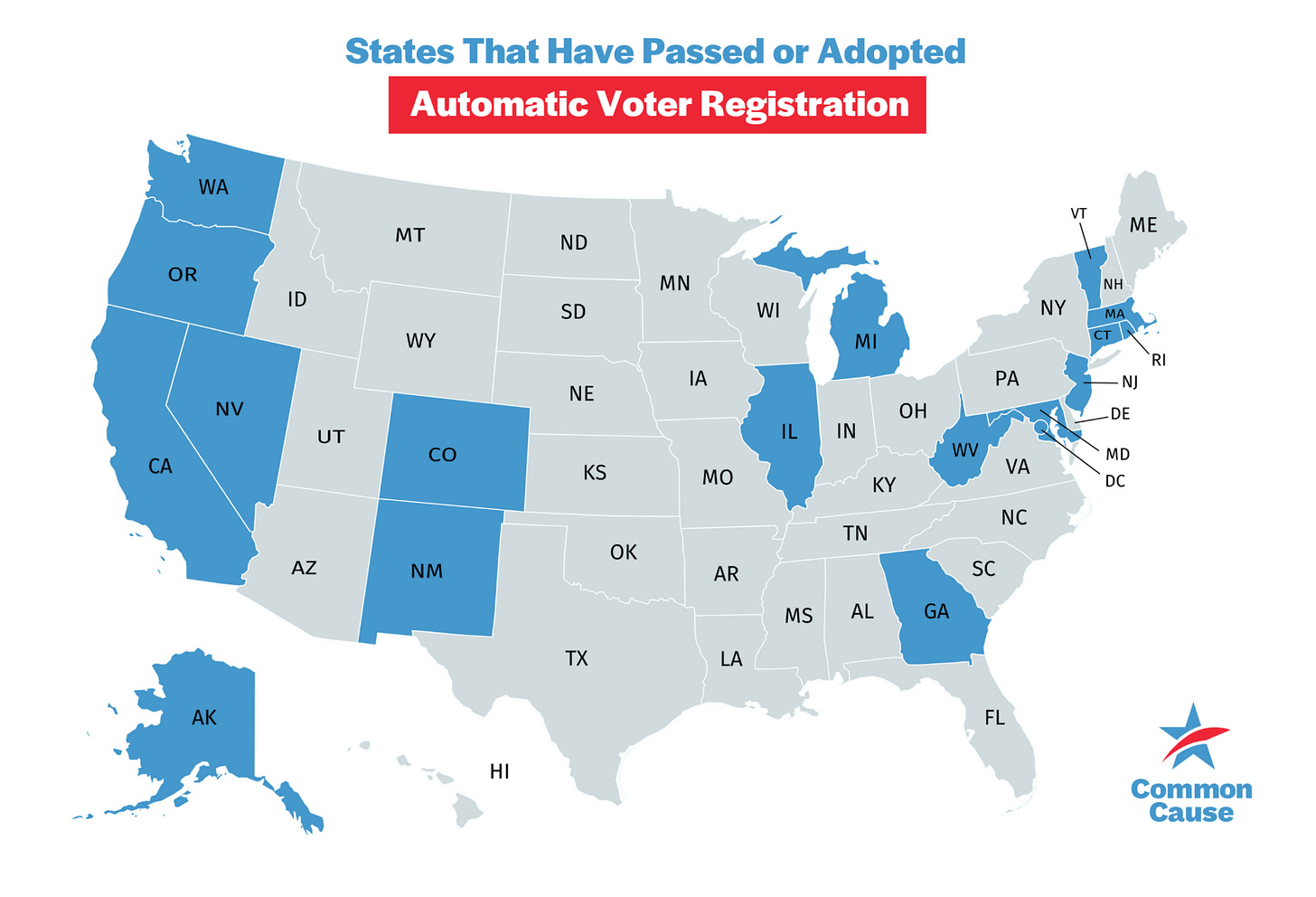Another step towards 100% student voting: registration policies!
Same day registration and automatic voter registration are not a panacea. But they definitely help a lot and get us closer to 100% student voting!
Compared to older Americans, turnout among students and youth is rising, but still incredibly low. What can be done to reach 100% student voting?
Part of the answer lies with educators and organizers, who are hard at work in get-out-the-vote campaigns at colleges and universities around the country. But another part of the answer lies in election policy. Specifically, state policies that make it easier to register to vote are especially important for increasing turnout among students and young people.
Automatic voter registration (AVR) and same-day registration (SDR) policies allow Americans to be automatically registered to vote when they move, go to the DMV, or show up to a polling place on Election Day. These policies were pioneered by states like Colorado and Washington, but they have spread to other states, like California, Georgia, and New York. We and other researchers find that these policies increase young Americans’ voter turnout.
These registration policies are especially helpful for students. In many states, if people want to vote, they have to first register to vote at least a month before the election—often by old-school snail mail, which young people are disproportionately unaccustomed to using. For students, that means registering in the early fall, the same time of year that they’re moving into new residences, starting new jobs, and getting a feel for the new academic term. Moreover, our research finds that young people often don’t know that registration requirements exist—and even if they do know, few are clear on how to register. No wonder that many students do not meet these 30-day registration deadlines.
Figure 1: Effect of SDR on Turnout by Age

That’s where voter registration reforms come in. Both policies tackle this burdensome step in the voting process—AVR by proactively registering eligible people who interact with a participating government agency, and SDR by letting people register and vote at the same time. It’s true that disinterest and feelings of political powerlessness are even bigger barriers to student voting than election policies. But registration reform has a real and consequential effect.
Finally, because young people disproportionately struggle with the registration step, these policies are especially effective at boosting youth turnout, but they have a positive impact on all age groups. By passing these two policies, states can increase student turnout—and make voting easier for everyone in the process. It’s a win-win.
We have more to learn about election policies, especially registration policies, and turnout. State governments have been rapidly changing voting rules in ways that can help and hinder student turnout, and the COVID-19 pandemic has further changed how we vote. More research is needed to better understand how pandemic-era election policies have shifted the student voting environment. Which changes have increased registration and turnout, and which barriers remain? When registration isn't a barrier, what are the best ways to maximize student turnout? How can we capitalize on states with SDR and AVR to get to our goal of 100% student voter participation? Along the way to answering these questions, it’s crucial to keep pushing all state governments to expand access to voter registration. Student turnout depends on it!
Jacob (Jake) M. Grumbach is an Assistant Professor of Political Science at the University of Washington. He received his PhD from UC Berkeley in spring of 2018 and was a Postdoctoral Fellow at the Center for the Study of Democratic Politics at Princeton. Outside of academia, Jake spends his time listening to 70s funk and soul music and 90s hip hop, and supporting the Golden State Warriors.
Charlotte Hill is a political scientist and research fellow at the Goldman School of Public Policy at UC Berkeley, where she studies how election laws and voter outreach impact political engagement. Before entering academia, she developed and managed policy and communications programs for multiple organizations, including global advocacy platform Change.org. She previously served as Vice President of the San Francisco Elections Commission and holds a PhD in public policy from UC Berkeley.





